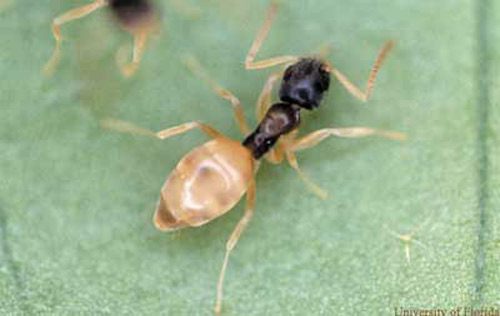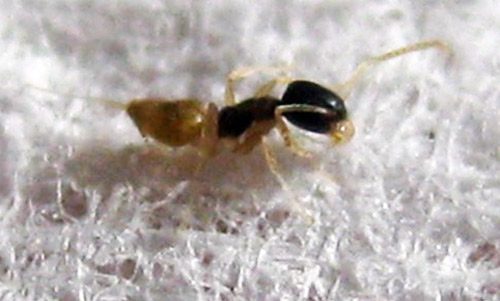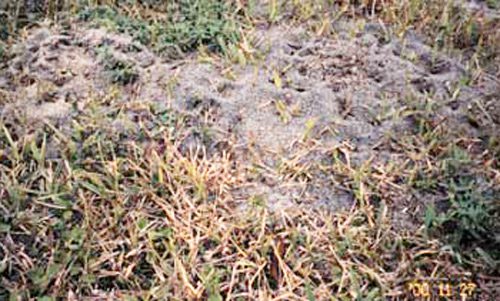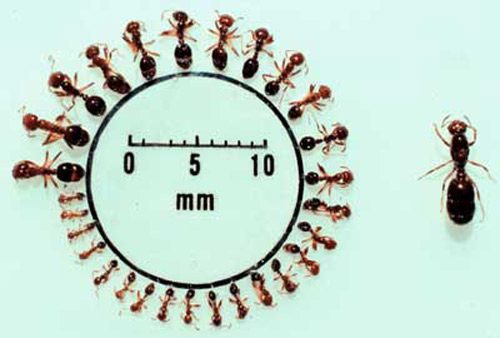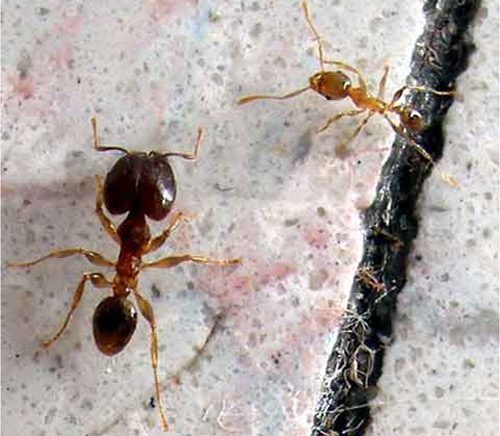Ant Problems? Call ACME Termite and Pest Control. Serving Bradenton and Sarasota
At ACME Termite And Pest Control we’ve seen an ant or two million in our 30 plus years in business. In fact we’ve seen just about every ant native to this area. From FIre Ants to Ghost Ants, Carpenter Ants and Big Headed Ants. If they live here in the Bradenton Sarasota area, we’ve dealt with them. Havester Ants, Crazy Ants, and even the common Pavement Ants. Each ant provides its own unique problems and means of control. If you’ve got Ant Problems, you need to call us and schedule your free service call. We will determine what type of ant is infested in your home, garden or business and the best plan to get rid of them. If you are looking for more information on the type of Ant thats causing you grief, feel free to click on the links below to visit the University of Florida Feature Creatures site. We look forward to helping you with your ant problem.
Call us Today: 941-756-0074
GHOST ANTS
The ghost ant, was considered a nuisance ant that was an occasional house pest within Florida as late as 1988. Field populations were confined to South Florida, although active colonies had been reported as far north as Gainesville, in Alachua County and Duval County, but by 1995, if not before, the ghost ant was common in central and southern Florida and had been elevated to major pest status. In Florida, the ghost ant is mostly found from Sarasota to Orlando and south. This species is a household pest. In Florida, it is considered one of the most important of such ant pests. The ghost ant can not only invade houses from outside, but they can nest in the house as well. Although the ant feeds upon many household foods, it seems to show a preference for sweets, having been observed feeding on sugar, cakes, and syrups. Outside, the workers scavenge for dead insects and tend sap-sucking insects, collecting honeydew.
For more information follow this link to the University Of Florida’s Featured Creature’s Page
CARPENTER ANTS
The Florida carpenter ant complex is comprised of several species, two of which are common around structures. These bicolored arboreal ants are among the largest ants found in Florida, making them apparent as they forage or fly indoors and out. In a survey of common urban pest ant species covering four metropolitan areas of Florida (Daytona-Orlando, Tampa Bay area, Sarasota-Ft. Myers, and the greater Miami area) Infestations of Florida carpenter ants accounted for approximately 20% of all ant complaints by homeowners. During the flight season, carpenter ants can often be found in alarming numbers. Sometimes homeowners are concerned about damage to the structural integrity of their homes, which they sometimes incorrectly learn, is caused by Florida carpenter ants. However, unlike the wood-damaging black carpenter ant, found in Florida’s panhandle and a few other western U.S. species, Florida carpenter ants seek either existing voids in which to nest or excavate only soft materials such as rotten or pithy wood and Styrofoam. Other concerns are that these ants sting (they do not) and bite (they do).
FIRE ANTS
Two species of fire ants are found in Florida. Most notorious is, the red imported fire ant (RIFA), followed by the much less common tropical or native fire ant. The fire ant typically lives in the ground. Mounds are built of soil and are seldom larger than 46 cm (18 in) in diameter. When a mound is disturbed, ants emerge aggressively to bite and sting the intruder. A white pustule usually appears the next day at the site of the sting. In urban settings, the RIFA may nest under patio slabs, in lawns, under edges of sidewalks, foundations, concrete driveways, and electrical boxes. After a heavy rain, the colony may move to higher ground or inside homes to take refuge from saturated soil.
For more information follow this link to the University Of Florida’s Featured Creature’s Page
BIG HEADED ANTS
The Big Headed ant, is a very successful invasive species that is sometimes considered a danger to native ants and has been nominated as among 100 of the “World’s Worst” invaders. The Big Headed Anthas been a pest in southern Florida for many years, and according to reports by pest control operators, it is becoming an even more pervasive nuisance as it displaces other ants, such as the red imported fire ant (RIFA), and the white-footed ant in some areas. The Big Headed Ant is a soil-nesting ant, is sometimes confused with subterranean termites because it may create debris-covered foraging tubes that are somewhat similar, albeit much more fragile, than termite tubes. More often these ants leave piles of loose sandy soil. Homeowners are annoyed by these “dirt piles” and by ants foraging in bathrooms, kitchens, around doors, and windows, as well as on exterior paved or brick walkways or driveways. Control of the Big Headed Ant is difficult because the ant colonies are numerous and populations usually extend across property lines.

